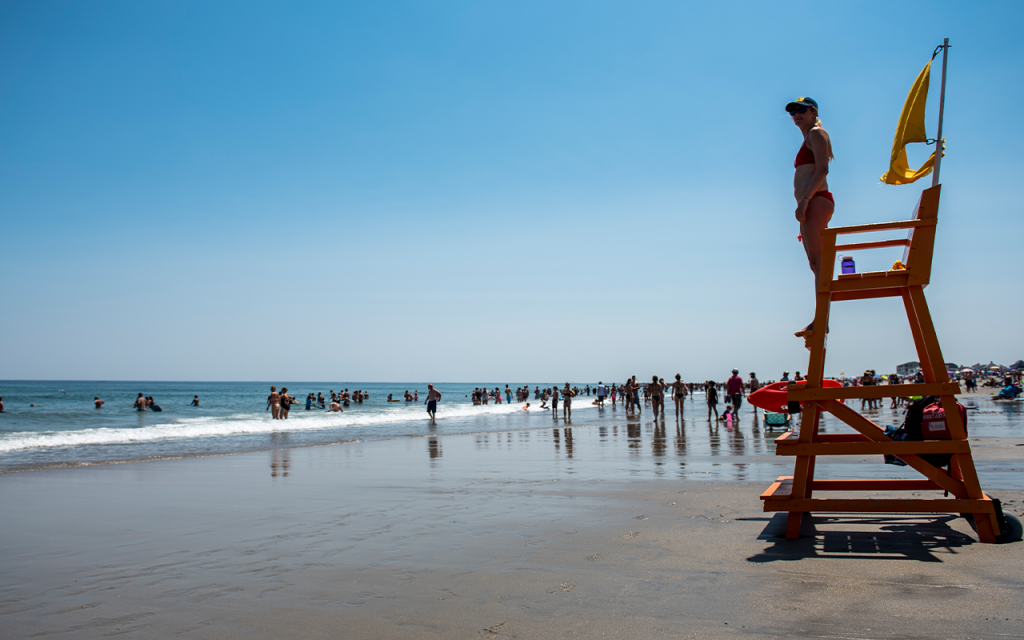Tragedy at Hampton Beach: A Family’s Summer Outing Turns Fatal
In a heartbreaking incident that underscores the power and unpredictability of ocean currents, a 17-year-old boy drowned while swimming with his family at Hampton Beach, New Hampshire. The tragedy unfolded Sunday evening when the teenager was caught in a strong current and swept away from shore. In a desperate attempt to save his son, the 61-year-old father also entered the treacherous waters, only to find himself similarly overwhelmed by the current’s force. Though lifeguards had officially ended their shift, they quickly returned to the scene after receiving the emergency call around 6:45 p.m. Despite their swift response and immediate rescue efforts that brought both father and son to shore, the teenager could not be saved. Emergency responders transported both individuals to a local hospital, where the young man was pronounced dead while his father received treatment and remains in stable condition. As authorities continue their investigation, Hampton Beach has temporarily suspended swimming access due to the hazardous conditions.
This tragedy occurs amid an unusually dangerous period at Hampton Beach, where the effects of recent tropical weather systems have created perilous swimming conditions. Just the previous week, lifeguards performed over 140 rescues from rip currents generated by Tropical Depression Dexter – an extraordinary number that highlights the current elevated risk. “A lot of the sand in those flash rip currents really kicked out, especially around high tide, which we normally don’t see here,” explained Patrick Murphy, chief of the New Hampshire State Beach Patrol. With Hurricane Erin approaching the region, officials are bracing for even more hazardous surf conditions that could put additional swimmers at risk. The temporary closure of beach access for swimming reflects the serious concern authorities have about the current dangers lurking beneath the seemingly inviting waters.
Rip currents represent one of the most deadly natural hazards facing beachgoers across the nation. According to the United States Lifesaving Association, these powerful, channeled currents of water flowing away from shore claim more than 100 lives annually. What makes them particularly dangerous is their deceptive nature – they can form quickly, appear calm on the surface, yet pull swimmers away from shore with surprising strength. Tens of thousands of people require rescue from rip currents each year, as reported by the National Oceanic and Atmospheric Administration (NOAA). The recent surge in rescues at Hampton Beach illustrates how tropical weather systems, even those that don’t make direct landfall, can dramatically increase the frequency and intensity of these currents along coastlines hundreds of miles away.
Beach safety experts emphasize that understanding how to respond when caught in a rip current can mean the difference between life and death. Chief Murphy stressed the crucial advice that has saved countless lives: “The best bet is to swim parallel to shore. Do not try to go directly back to shore. You’re going to be fighting the current. You’re going to get tired.” This strategy allows swimmers to exit the narrow channel of the rip current before attempting to return to shore. Experts also advise beachgoers to remain calm if caught in a rip current – panic often leads to exhaustion and increases the danger. Additionally, swimming at beaches with active lifeguard supervision during their official hours significantly reduces drowning risk, as trained professionals can spot dangerous conditions and respond quickly to emergencies.
The Hampton Beach incident highlights the particular vulnerability of teenage swimmers, who often combine developing swimming abilities with a willingness to venture further from shore than younger children. Parents and guardians face the challenging balance of allowing young people appropriate independence while ensuring their safety in potentially dangerous environments. The father’s instinctive action to save his son reflects a common parental response that, tragically, often leads to multiple victims in drowning incidents. Safety experts recommend that would-be rescuers without proper training should avoid entering the water themselves, instead throwing flotation devices if available and immediately alerting lifeguards or emergency services. The emotional weight of this tragedy – a family outing transformed into unimaginable loss – serves as a sobering reminder of how quickly recreational activities can turn deadly when natural forces are involved.
As the New Hampshire State Police Marine Patrol continues its investigation into this tragic drowning, the incident serves as a powerful reminder of the respect and caution oceangoers must maintain, even at familiar beaches. Local officials will reassess conditions at Hampton Beach in the coming days, balancing public access with safety concerns as Hurricane Erin’s influence potentially creates additional hazards. For the grieving family, no safety message can ease their profound loss. Yet their experience may help save others by reinforcing vital water safety messages: swim near lifeguards during supervised hours, learn to recognize and respond to rip currents, and understand that even strong swimmers can be overwhelmed by ocean forces. As summer beach season continues, this tragedy stands as a solemn reminder that vigilance and respect for the ocean’s power must accompany the joy of seaside recreation – a lesson written not just in safety guidelines, but now painfully inscribed in one family’s life forever.


